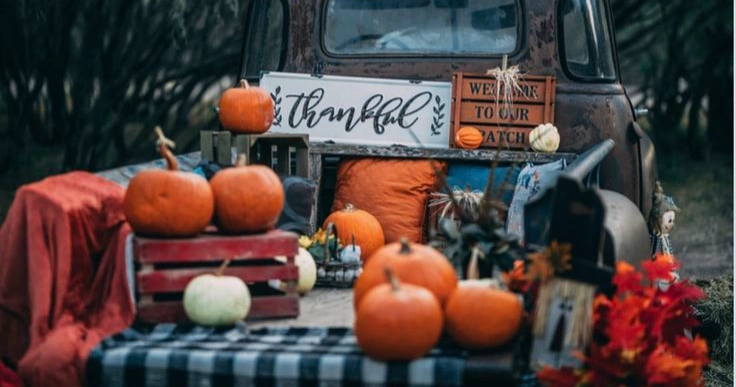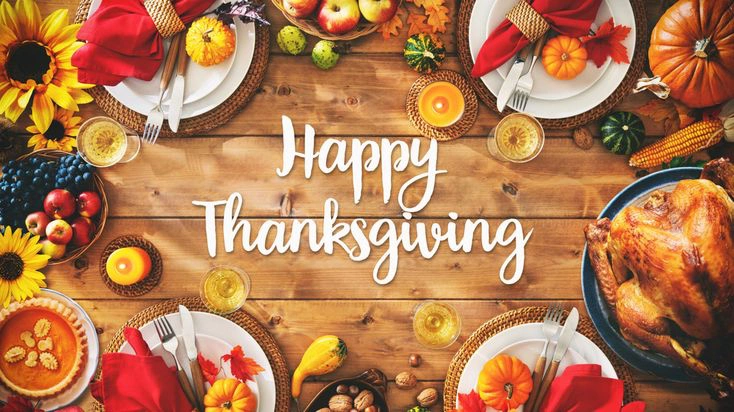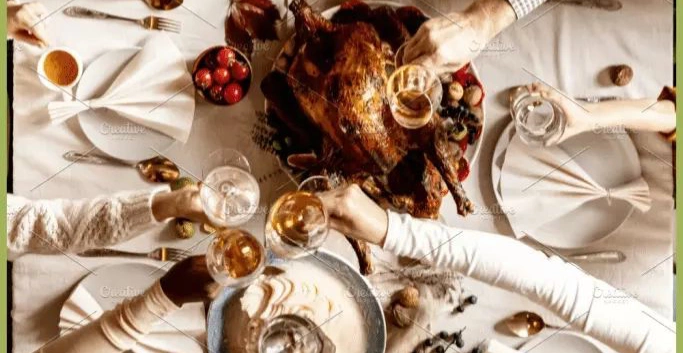Outdoor Adventures Posts on Crowch
On February 8, 2026, the world will pause to watch: at Levi’s Stadium in Santa Clara, California, the 60th edition of the Super Bowl (Super Bowl LX) will take place. This event traditionally combines sport, culture, and business, becoming the grandest celebration of American football and one of the most anticipated sporting spectacles in the world.
The Power of Tradition
The Super Bowl is not just the championship game of the National Football League (NFL). It is a symbol of American sporting culture that has, over decades, expanded far beyond the borders of the United States. Every year, millions of people tune in, regardless of whether they are football fans or not. The Super Bowl is a show that unites people through emotion, music, and spectacle.

The Festive Atmosphere
Levi’s Stadium already hosted the Super Bowl in 2016, and now it will once again become the center of global attention. More than 70,000 spectators are expected to fill the stands, while hundreds of millions will follow the broadcast around the world.

Beyond the game itself, much of the spotlight is on the Halftime Show — the iconic musical performance during the break. It is not just a concert, but a dazzling spectacle featuring some of the world’s biggest superstars. For many viewers, this show is the highlight of the entire evening.
Economics and Impact
The Super Bowl is more than just sport — it is also a massive economic engine. Millions of dollars are invested in production, commercial spots reach record-breaking prices, and host cities benefit from a huge influx of tourists. Santa Clara and the entire Silicon Valley region are preparing to welcome tens of thousands of guests and deliver an unforgettable experience.
A Cultural Symbol
Every Super Bowl creates new legends and becomes a part of history. It is more than the battle for the NFL title — it is the meeting point of sport, art, tradition, and mass culture.
✨ Super Bowl LX in 2026 promises to be an event that unites millions of people around the globe. Even those far removed from American football will find something for themselves: adrenaline, music, spectacle, and an atmosphere that will never be forgotten.
From February 6 to 22, 2026, Italy will host the XXV Winter Olympic Games in Milan and Cortina d’Ampezzo. More than just a competition, these Games will represent unity, cultural exchange, and a celebration of both tradition and modernity.
🏔 The Symbol of Two Cities
For the first time, the Olympics will be hosted in two such contrasting locations:
- Milan — a dynamic metropolis of fashion and innovation, hosting ice events and ceremonies.
- Cortina d’Ampezzo — the jewel of the Dolomites, rich in alpine traditions, staging skiing, biathlon, and sledding competitions.

Together, they embody the richness of Italy: modernity and tradition, urban energy and natural beauty.
🥇 Stories and New Heroes
Every Olympics creates legends. In 2026, the spotlight will be on young freestyle and snowboarding athletes who symbolize a new generation, while classic events like figure skating and hockey will produce unforgettable champions.
For Italy, this is also history repeating itself: Cortina hosted the Winter Olympics back in 1956, and now, 70 years later, the Olympic flame will once again shine in its mountains.
🌍 A Dialogue of Cultures

The Games are also a cultural festival. Milan will host concerts, exhibitions, and theater performances, while Cortina will showcase Alpine cuisine, traditions, and open-air celebrations. The Olympics will be a global dialogue where cultures meet and unite.
🌱 A Sustainable Legacy
Sustainability is central to Milan-Cortina 2026. Existing venues are being reused, eco-friendly transport is prioritized, and initiatives aim to minimize the environmental footprint. The legacy will include improved infrastructure, tourism growth, and stronger sports programs for future generations.
🎉 The Spirit of the Fans
The Olympics are, above all, about emotion. Fan zones, street festivals, and shared celebrations will turn Milan and Cortina into a stage for joy and unity. Italians’ passion for celebration will make these Games unforgettable.
✨ Conclusion
The Winter Olympics 2026 will be a festival of sport, culture, and friendship. Milan will contribute its modern energy, while Cortina will bring the timeless beauty of the Alps. Together, they will create an event that will remain in history as one of the most inspiring Winter Games ever.
From February 6 to 22, 2026, Italy will host the XXV Winter Olympic Games, bringing athletes and fans from around the globe to Milan and Cortina d’Ampezzo.
🏔 Unique Locations
For the first time, the Games will be split between two distinct cities:
- Milan — the world’s fashion capital, will host opening and closing ceremonies, figure skating, short track, and ice hockey.
- Cortina d’Ampezzo — an Alpine jewel, will stage alpine skiing, biathlon, luge, and bobsleigh.
This blend of modern metropolis and mountain resort highlights Italy’s diversity.

🥇 Sports and New Disciplines
More than 3,500 athletes from nearly 100 nations will compete in classic winter sports like cross-country skiing, ski jumping, and speed skating.
Snowboarding and freestyle skiing will gain expanded formats, appealing to younger fans and adding a spectacular, festival-like energy.
🌍 Cultural Exchange
The Games will also serve as a cultural bridge. Milan will host concerts, theater shows, and fashion events, while Cortina will offer Alpine food festivals and outdoor concerts. Visitors will experience both the energy of the city and the beauty of the mountains.
🌱 Sustainability and Legacy

Organizers aim to make these Olympics the greenest ever, reusing existing venues and promoting eco-friendly transport. The focus is on reducing environmental impact and leaving a positive legacy for future generations.
🎉 Festival Atmosphere
Fan zones in Milan and Cortina will bring together thousands of spectators to celebrate victories, watch live broadcasts, and enjoy the Olympic spirit.
✨ Conclusion
The Winter Olympics 2026 will be a unique blend of sport, culture, and sustainability. Milan will offer the pulse of a modern city, while Cortina will deliver the magic of the Alps. Together, they will create unforgettable Games that inspire the world.
The World Aquatics Championships 2025 became a milestone event as it was held for the first time in Southeast Asia — in the vibrant city of Singapore. The tournament gathered more than 2,400 athletes from over 200 countries, competing in six disciplines: swimming, artistic swimming, diving, high diving, open water swimming, and water polo.
The competition took place from July 11 to August 3 at the Singapore Sports Hub. A temporary “World Aquatics Championships Arena” was built for swimming and artistic swimming, while the OCBC Aquatic Centre hosted diving and water polo events.

The theme of the championship, “Water Shapes Us,” reflected Singapore’s deep connection to water as a source of life and inspiration. Two mascots — Ollie the otter and Dewey the dugong — became the beloved symbols of the tournament.
One of the most remarkable highlights was the wider distribution of medals. While 29 nations earned medals at the previous championships, the record was surpassed in Singapore, showing the global growth and competitiveness of aquatic sports.
The U.S. team faced challenges due to a sudden viral illness that affected several swimmers. Despite this, the American stars demonstrated their strength, with Katie Ledecky once again confirming her status as one of the world’s greatest athletes.

The organization of the event was outstanding. More than half a million spectators attended competitions and fan zones, while thousands of volunteers played a crucial role in the success of the championships. The grand finale was marked by a world record in the women’s 4×100m medley relay, symbolically closing the event on the highest note.
A special place was given to the Masters competition, which welcomed around 6,000 participants from 100 countries. Athletes of different ages competed in the same venues as professionals, proving that sport is truly a universal language that unites generations.
Key takeaways from the 2025 Championships:
- A successful debut for Southeast Asia as host of a world-class aquatic event.
- Recognition of sport as a unifying force across nations and cultures.
- Inspiration for a new generation of athletes and fans worldwide.
nternational Men’s Day, observed on November 19, is more than just a date on the calendar — it is an important occasion for reflection. This day allows us to see men’s role in the modern world from a new perspective and reminds us that true strength is found not only in actions but also in honesty, care, and responsibility.
🌍 Why do we need this day?
Today, men take on many roles: they build families, raise children, pursue careers, and act as leaders and mentors. Yet society often expects them to be “strong” and “unbreakable,” overlooking their emotional and personal struggles. International Men’s Day challenges these stereotypes, emphasizing that masculinity also includes the ability to express feelings, ask for help, and care for oneself.
💡 Inspiring examples
Across the globe, the holiday is celebrated by sharing stories of men who inspire others. It could be a father devoted to raising his children, a doctor saving lives, a teacher guiding students, or a neighbor always ready to help. These examples show that heroism is often found in everyday actions.

👨👩👦 Care and family
Modern men are increasingly involved in family life and child-rearing. Fatherhood is becoming a symbol of a new masculinity — not rigid or distant, but loving, supportive, and open. International Men’s Day highlights care as one of the most important masculine virtues.
🩺 Health and well-being
One of the holiday’s key missions is raising awareness about men’s health. Many men remain silent about mental health struggles or delay seeing a doctor. This day serves as a reminder that caring for one’s health — both physical and mental — is a vital step toward a happy future.

🌟 A new vision of masculinity
International Men’s Day helps society move toward balance and equality. It emphasizes that men, just like women, need support, understanding, and respect. It opens a space for dialogue about a future where everyone can fulfill their potential without fear of judgment.
✨ This day is not only about men — it is about all of us. Respect, gratitude, and care are values that make our society stronger and more humane.
Every year on November 19, the world observes International Men’s Day. It is an occasion to reflect on men’s contributions to families, workplaces, culture, and society. This holiday is not about competition between genders, but about recognizing the importance of men’s role and raising awareness of the challenges they face today.
🌍 The symbol of the day
The founder of International Men’s Day, Dr. Jerome Teelucksingh from Trinidad and Tobago, dedicated the date to his father’s memory. His idea resonated across the globe, because throughout history, men have served as pillars of support, role models, and sources of inspiration.
💡 Modern values
Today, the focus is not just on physical strength but also on qualities that define true character: honesty, kindness, responsibility, and the ability to care. International Men’s Day helps break down stereotypes and encourages healthier perspectives on masculinity.

👨👩👦 Fatherhood and family
Fatherhood holds a special place in the celebration. Men are increasingly involved in raising their children, setting examples of caring, engaged, and supportive fathers. This shift transforms social expectations and creates a more balanced future.
🩺 Self-care and well-being
Many men neglect their health and emotional well-being. International Men’s Day serves as a reminder that caring for oneself is not weakness but strength. Campaigns and events highlight the importance of disease prevention, mental health, and open dialogue.

🌟 Gratitude and recognition
This day is also an opportunity to say “thank you” to the fathers, brothers, friends, and colleagues who make our lives brighter and safer.
✨ International Men’s Day is not just a celebration, but a step toward balance and respect — a world where everyone can show their best qualities.
Every year on November 19, many countries around the world observe International Men’s Day. This holiday is not only about recognizing men’s achievements but also about highlighting their role in society, in families, and in shaping future generations.
🌍 History of the holiday
The idea of International Men’s Day emerged in the 1990s. It was founded by Dr. Jerome Teelucksingh from Trinidad and Tobago, who dedicated the date to the memory of his father — a man who embodied responsibility, honesty, and care. Since then, the celebration has spread across the globe and is now supported in dozens of countries.
💪 Values and goals
International Men’s Day addresses important issues:
- improving the health of men and boys,
- promoting positive male role models,
- fostering gender equality and mutual respect,
- highlighting fatherhood and men’s role in families,
- building a culture of support rather than competition.
The holiday reminds us that true strength lies not only in endurance but also in responsibility, care, and integrity.

👨👩👧👦 Men in family and society
Today, men are recognized not only as providers or protectors but also as partners, fathers, and friends. Emotional maturity, empathy, and the ability to communicate openly are valued qualities. International Men’s Day challenges stereotypes and inspires a vision of a more balanced and supportive society.
🩺 Focus on health

One of the core missions of the day is raising awareness about men’s health. Men are less likely to visit doctors, which often leads to late diagnoses. The holiday encourages attention to both physical and mental health, reminding men that self-care is vital.
🌟 Modern meaning
International Men’s Day is a chance to say “thank you” to the fathers, brothers, husbands, friends, and colleagues in our lives. It is a day of recognition but also a day for open conversation about the challenges men face.
✨ International Men’s Day is more than just a holiday — it is an important step toward creating a fairer, kinder, and healthier world for everyone.
n today’s fast-paced world, we are constantly rushing — work, obligations, news, meetings. Sometimes we forget to stop and reflect on what we are grateful for. That is why Thanksgiving, celebrated annually in the United States and Canada, remains such a special holiday — a day when millions of people consciously say the simple words of gratitude.
🌽 Where did it begin?
The story of Thanksgiving goes back to the 17th century, when the first settlers, after surviving a harsh winter, celebrated their harvest with a feast shared with Native Americans. That meal became a symbol of friendship, help, and hope. Over time, it grew into a cultural tradition uniting an entire nation.
🦃 At the table
The centerpiece of the holiday is the family dinner. Turkey, corn, mashed potatoes, cranberry sauce, and pumpkin pie fill the table. But the true value is not the food — it’s the people gathered around it. Families come together to share stories, laughter, and warmth, creating memories that last a lifetime.

❤️ The art of gratitude
Thanksgiving teaches us that gratitude is more than a polite word — it is a source of inner strength. It helps us see light in hard times, strengthens our relationships, and makes us kinder. Many families take turns sharing what they are thankful for, turning the dinner into a heartfelt ritual.
🙌 Helping others
Charity has also become part of the tradition. Across America, volunteers host free dinners for the homeless, collect donations, and deliver food to those in need. Thanksgiving reminds us that gratitude also means generosity.

🎉 Modern touches
Today, the holiday is marked by parades, football games, and the start of the Christmas shopping season. Yet, at its core, Thanksgiving remains what it has always been — a celebration of family, kindness, and thankfulness.
✨ On Thanksgiving, we practice one of life’s simplest yet most powerful arts — saying “thank you” for what we have and for those who stand beside us.
Thanksgiving is one of those rare holidays that unites millions of people regardless of age, background, or faith. It is celebrated on the fourth Thursday of November in the U.S. and the second Monday of October in Canada. At its core lies something deeper than tradition — gratitude.
🌎 History and tradition
The first Thanksgiving was celebrated in the 17th century, when European settlers, after surviving a harsh winter and hunger, shared their first successful harvest with Native Americans who had helped them survive. Since then, Thanksgiving has become a symbol of hope, friendship, and new beginnings.
🦃 The holiday spirit

The centerpiece of the holiday is the family dinner. Turkey, pumpkin pie, cranberry sauce, and corn have long become the icons of Thanksgiving. Yet, more important than the food is the warmth of gathering — families and friends sitting around the table, sharing joy, and giving thanks for the past year.
❤️ The art of gratitude
In today’s fast-paced world, Thanksgiving carries a special meaning. It reminds us to slow down, look back, and say “thank you” — for family, for friends, for health, for opportunities, and even for life’s challenges. Gratitude has the power to warm the heart and strengthen bonds.
🙌 Acts of kindness

For many, the holiday is also about giving back. Families and organizations prepare meals for those in need, donate food, or raise funds for charity. Thanksgiving, in this way, becomes a celebration not just for households, but for entire communities.
🎉 Modern touches
Thanksgiving today is also marked by colorful parades, football games, and the beginning of the Christmas shopping season. Yet, these are only additions to the core values — unity, appreciation, and kindness.
✨ Thanksgiving teaches us to see light even in difficult times. Gratitude is more than words — it’s a state of heart that makes the world brighter.
Thanksgiving is one of the most important holidays in the United States and Canada, celebrated on the fourth Thursday of November in the U.S. and the second Monday of October in Canada. It is not just a date on the calendar — it is a symbol of gratitude for harvest, abundance, health, and family.
🌽 Historical roots
The holiday traces back to the 17th century, when the first European settlers, after enduring hardships and hunger, celebrated their first successful harvest with a feast shared with Native Americans. They gave thanks for survival, for help, and for hope. Over time, this tradition became a cornerstone of national culture.
🦃 Symbols of the holiday

The central symbol of Thanksgiving is the turkey, traditionally served with mashed potatoes, sweet potatoes, corn, cranberry sauce, and pumpkin pie. Yet, these dishes represent more than food — they symbolize abundance, care, and family unity.
👨👩👧👦 A holiday of family and togetherness
Thanksgiving is the day families gather around the table. In a modern world full of hurry and distractions, the holiday reminds us of the importance of connection and support. People express gratitude for the past year, for their friends, for love, and for the chance to be together.
💖 Gratitude and good deeds
The meaning of Thanksgiving extends beyond the home. Many communities organize free meals for those in need, run charity events, and support the less fortunate. This spirit of kindness makes the holiday even more profound.

🎉 Modern traditions
Today, Thanksgiving is also marked by parades (most famously Macy’s Parade in New York), football games, and, of course, the beginning of the holiday shopping season with Black Friday. But despite new customs, the essence remains unchanged — gratitude and unity.
✨ Thanksgiving is a celebration that reminds us: to value what we have and to share kindness with others is true strength.